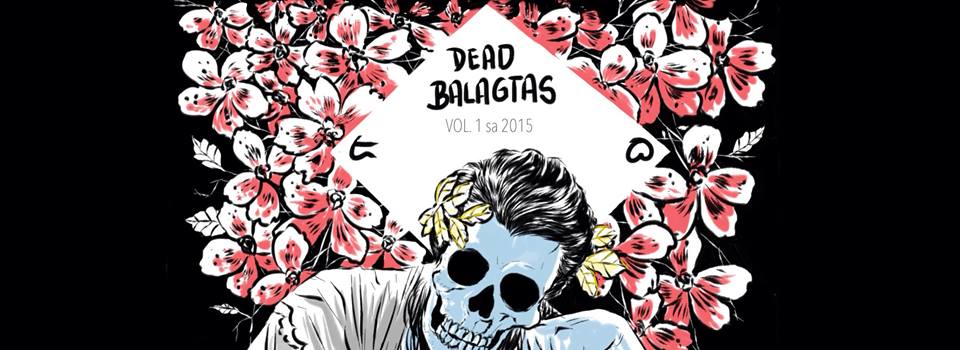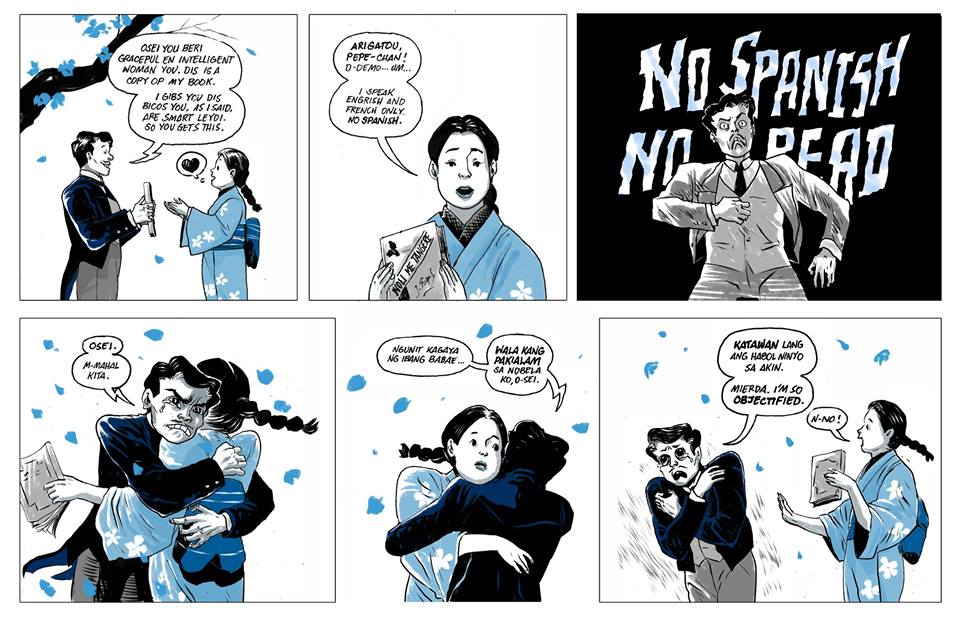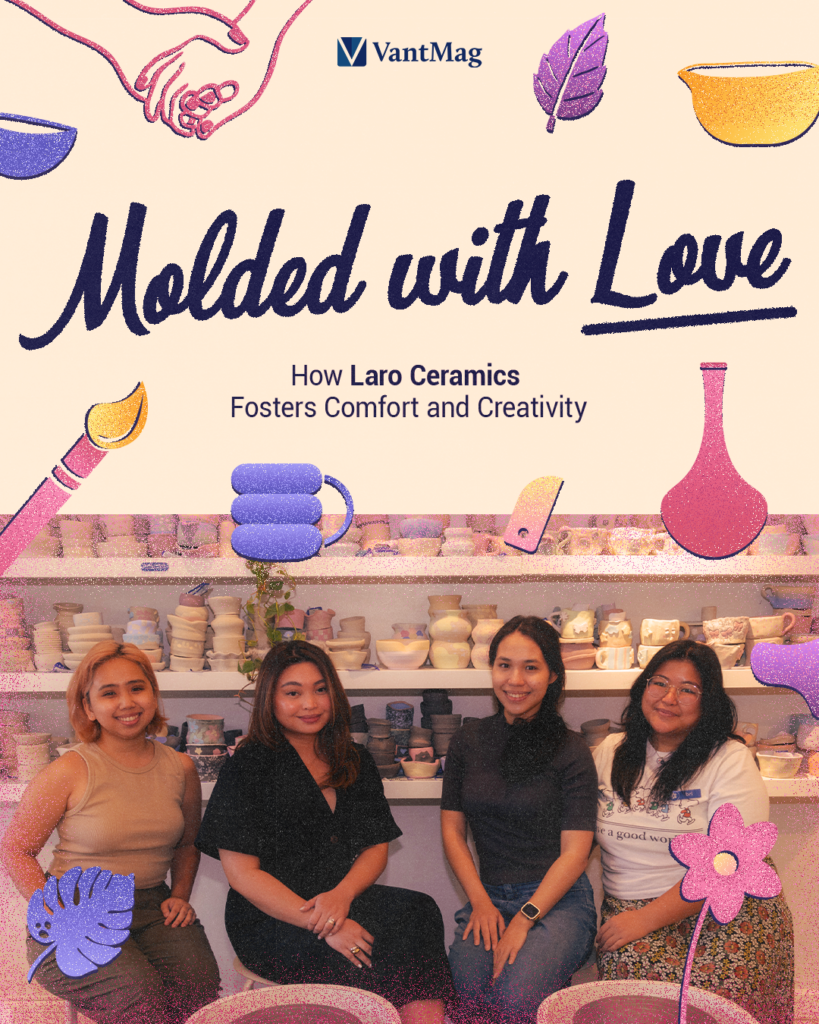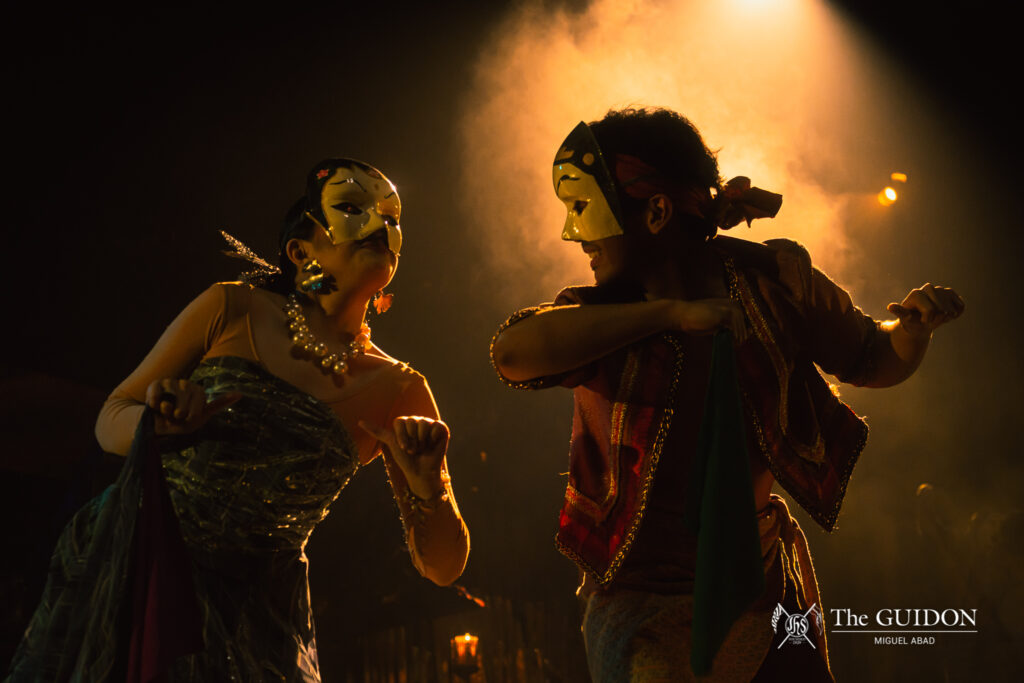Most students limit their knowledge of history to the classroom, but a nation’s history is more than just a slew of facts that need to be memorized for a decent grade. “No society can survive without a sense of history and culture,” reminds History Department Instructor Michael Pante, “because progress is premised on learning from past achievements and failures and on a firm understanding of a collective identity.”
This year’s film titled Heneral Luna and last year’s Bonifacio: Ang Unang Pangulo are just some examples of modern mediums that are being used to make stories of our nation relevant to younger audiences. Dead Balagtas, similarly, bridges history into a more consumable form of medium. A webcomic that combines history with pop culture reference, Dead Balagtas attempts to make the infamously unattractive topic of history into a more dynamic, and colorful point of discussion.
Behind the book
The vision of writer and comic artist Emiliana Kampilan for Dead Balagtas was to turn a seemingly dreary subject into something that was relatable and easily understood. Whether it’s by adding in Star Wars references or a few #hugot lines, Kampilan is able to make learning more enjoyable because of its conversational style and medium.
“If a teacher is able to somehow link or use pop culture references in historical themes, it makes them much more relatable to students today,” says David Lozada III, an associate professor at the History Department.
He admits that most subject matter can be a bit difficult for students to understand, especially when it comes to reading lengthy anecdotes.
“Dead Balagtas is a great way of bringing history to a younger audience using a medium and a ‘language’ they are familiar with,” adds Pante. “Dead Balagtas makes the past come alive, pun intended.”
Comics as a medium
“As a teaching tool, they’re very effective in the sense that most of my young students today are visual learners,” says Lozada. Historical or educational comics are able to introduce complicated topics to students in an effective manner. “They respond whenever they see photographs [or] they see moving pictures,” he adds.
In his article entitled “Educational Komiks: Shifting Perspectives,” Karl Ian Cheng Chua, PhD, director of the Japanese Studies Program, discusses how Filipino comics have gone from providing entertainment to the masses to becoming a tool for education.
He commends Kampilan for being able to integrate literary works in her comics (such as Ilocano epic Biag ni Lam-ang and Rizal’s novels), and for providing young learners with an avenue to be more familiar with related texts to further understand the comics. “Due to the limitations of the comic strip—panels, text, and content—the piece begins and ends with a thought piece to which the reader needs to do further research to verify the truthfulness of the piece,” says Chua.
Looking back
However entertaining these comics are, they always refer back to primary texts of history. Lozada says, “It is not a replacement. You cannot simply say, ‘I’d rather read a comic book instead of a book’. You still have to read the book, but then read the comic book version to give you an overview before going back to it.” He admits that there will always be “boring” topics for students, especially if it really can’t be helped, and that’s exactly where this kind of medium for storytelling comes in–to be used simply as a tool for better learning.
“Dead Balagtas cannot become a source of historical knowledge about the Philippines given its nature, unless it becomes historical in itself and reaches a stature similar to that of Ikabod, Kalabog en Bosyo, or Pugad Baboy,” says Pante, “and I don’t think the creator intends it to be one.”
“Furthermore, Dead Balagtas… includes fictional events in her piece,” adds Chua. “Hence, to use the pieces as the primary form of education would risk the teaching of an untruth within Philippine history.” Dead Balagtas has found the in-between of being both an entertaining and informative read. Though there are no shortcuts to learning our nation’s history, Dead Balagtas provides a different take that we will definitely never read about in our history books.
Yours, mine, and ours
Chua illustrates how comics are realistically used in the classroom, “To use comics or graphic novels in history classes… you have to make sure the students have the capacity to identify truth from fiction.” While teaching his Asian History class in the Ateneo, Chua used Tintin’s Blue Lotus and Gene Luen Yang’s Boxers and Saints to start a discussion on the Qing Dynasty. However, his students took the concepts and fictional characters from the comics as facts.
Despite this, Dead Balagtas still promises to be as helpful as it set out to be. “It was through Pugad Baboy that I first understood corruption, class divisions, even US imperialism,” says Pante. “I am optimistic Dead Balagtas will do the same thing to students growing up in the 21st century.”










